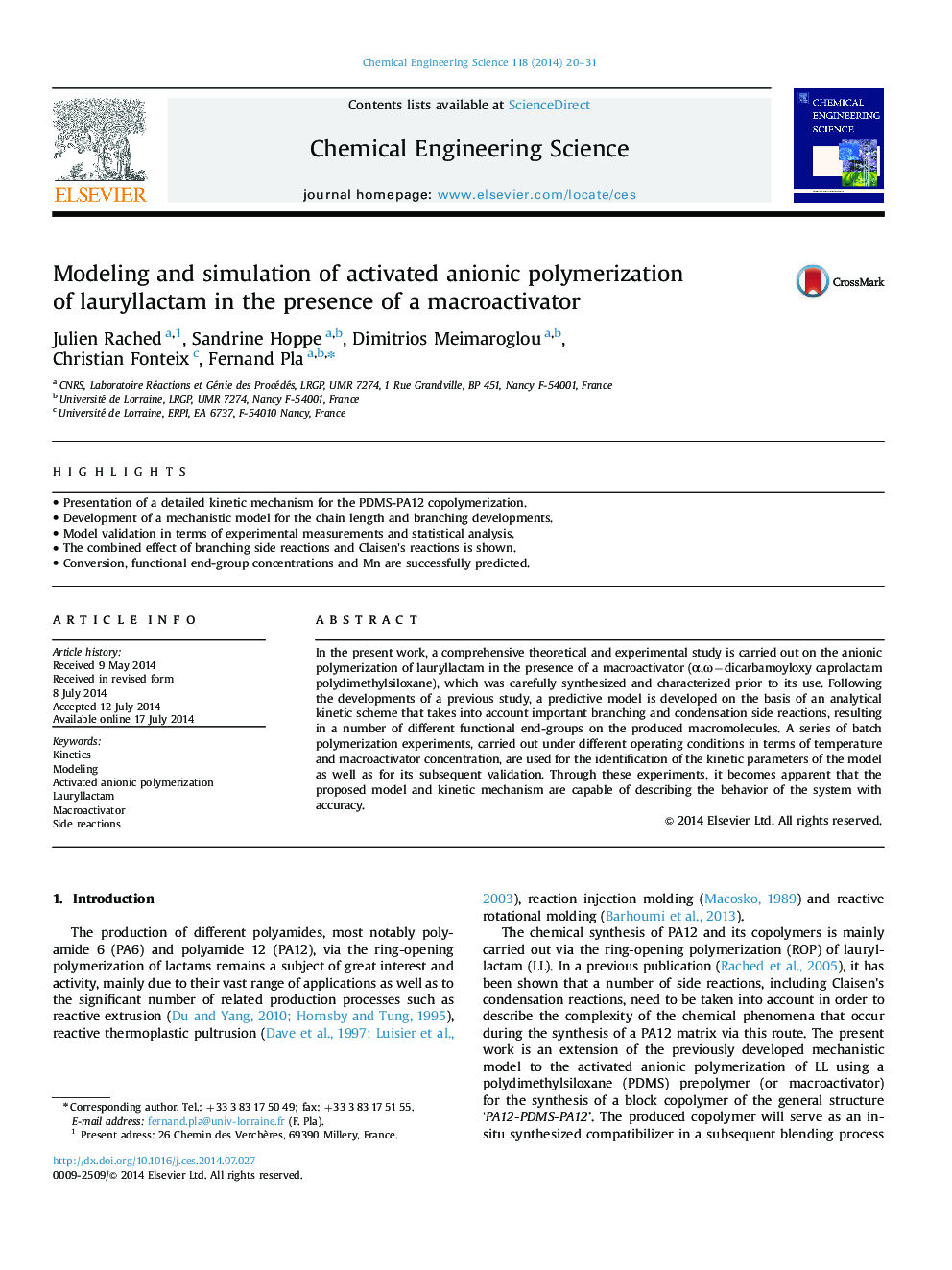| Article ID | Journal | Published Year | Pages | File Type |
|---|---|---|---|---|
| 154768 | Chemical Engineering Science | 2014 | 12 Pages |
•Presentation of a detailed kinetic mechanism for the PDMS-PA12 copolymerization.•Development of a mechanistic model for the chain length and branching developments.•Model validation in terms of experimental measurements and statistical analysis.•The combined effect of branching side reactions and Claisen׳s reactions is shown.•Conversion, functional end-group concentrations and Mn are successfully predicted.
In the present work, a comprehensive theoretical and experimental study is carried out on the anionic polymerization of lauryllactam in the presence of a macroactivator (α,ω−dicarbamoyloxy caprolactam polydimethylsiloxane), which was carefully synthesized and characterized prior to its use. Following the developments of a previous study, a predictive model is developed on the basis of an analytical kinetic scheme that takes into account important branching and condensation side reactions, resulting in a number of different functional end-groups on the produced macromolecules. A series of batch polymerization experiments, carried out under different operating conditions in terms of temperature and macroactivator concentration, are used for the identification of the kinetic parameters of the model as well as for its subsequent validation. Through these experiments, it becomes apparent that the proposed model and kinetic mechanism are capable of describing the behavior of the system with accuracy.
